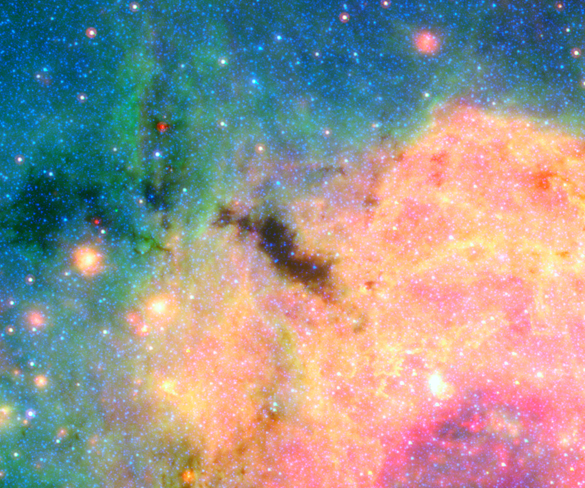A frozen cluster of gas

Reading about this blob of gas reminded me, once again, just how much we don't know about how the universe works:
"An image from the Spitzer Space Telescope shows an area of the center of the Milky Way known as the Brick. More than 100,000 times the mass of the Sun, the Brick doesn’t seem to be forming any massive stars — yet. But based on its immense mass in such a small area, if it does form stars — as scientists think it should — it would be one of the most massive star clusters in the Milky Way galaxy."
So why isn't it forming stars? We have no idea:
"We have more to investigate before we can really be sure what’s going on,” Ginsburg said. “I would say we’re in the hypothesis-forming phase, not the drawing conclusions phase.”
More:
- There are so many stunning images from the James Webb Telescope--this is another of my favorites: Snake in Galactic Plane.
Playing matchmaker for corals
By Melissa Gaskill. The Revelator.
Coral reefs, which support both massive marine ecosystems and human economies, continue to decline due to rising sea temperatures and pollution.
But some scientists are using a “sort of fertility treatment for corals” to help restore reefs. It’s less labor intensive than other restorative techniques, but still requires significant planning, physical effort, and an adventurous spirit:
“Spawning is usually in the middle of the night, and during hurricane season, which is doable but not convenient.”
VIDEO: What's inside this crater in Madagascar?
By Vox.
Spoiler: it's people.
"Nestled in the crater at the center" of a mountain in the middle of remote Madagascar, there's a village. And the people living there took up residence less than twenty years ago as of the making of this video. The real question of the video, then, is: "why did these people move to such an incredibly isolated place?"
It takes months to find the answer and along the way they also explore seismic tomography, volcanology, plate tectonics, and geology--all of which help explain the human core of this story.